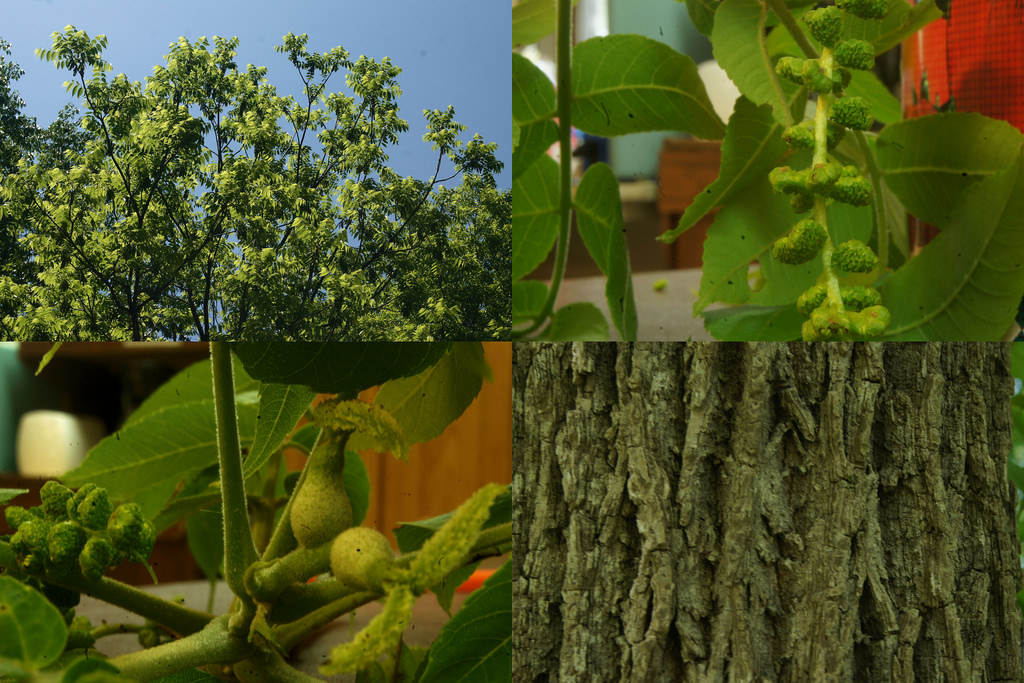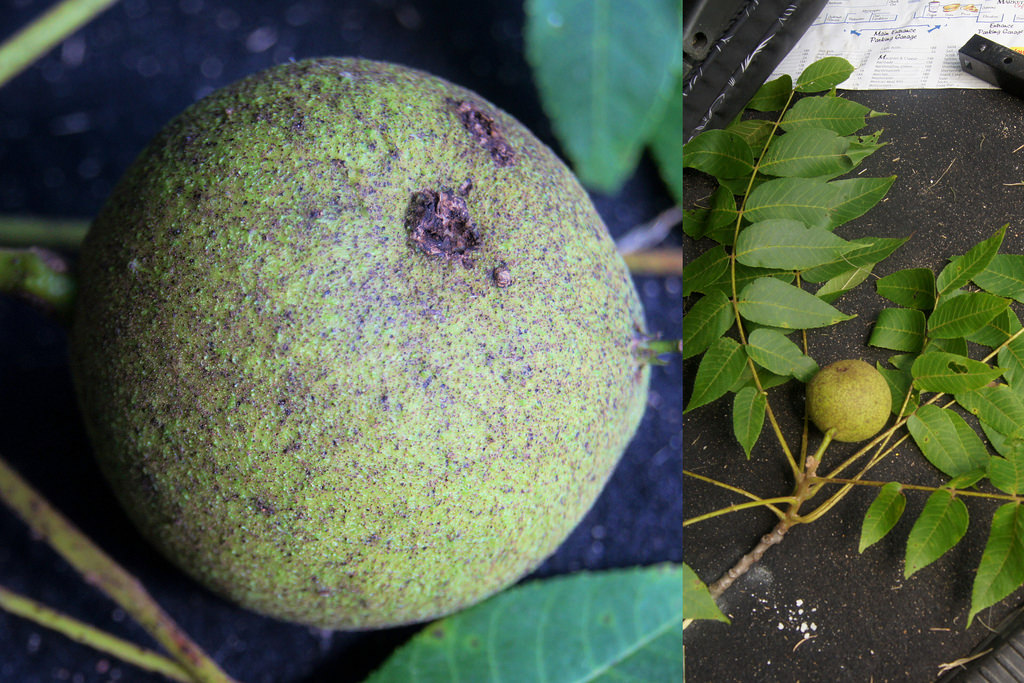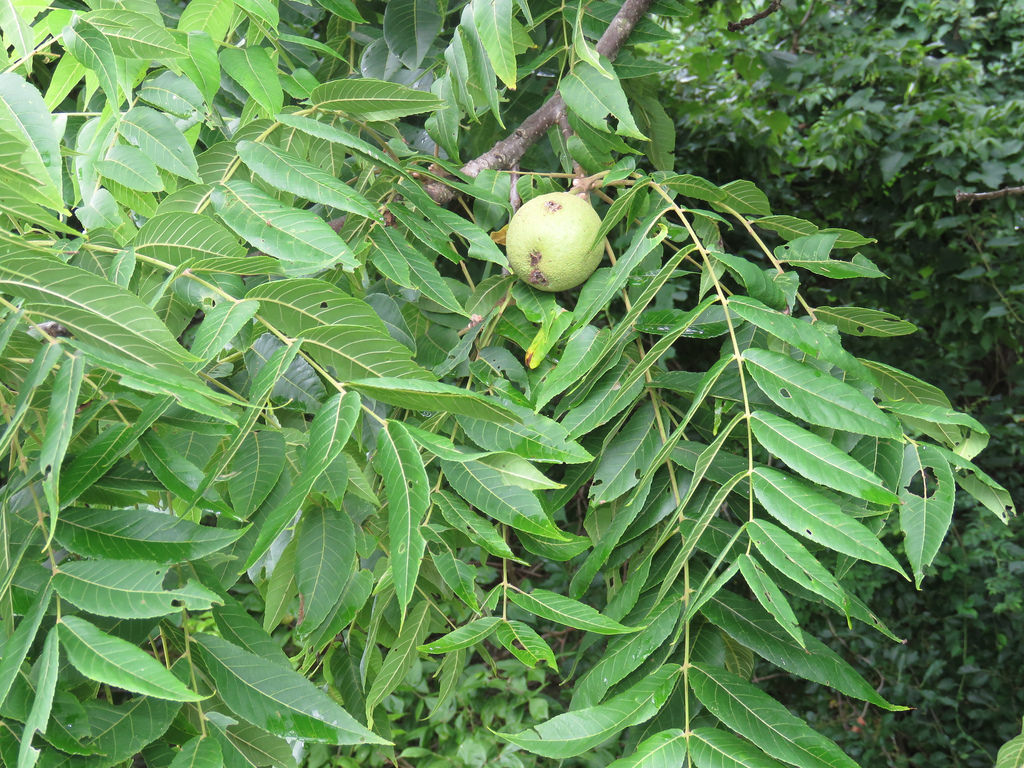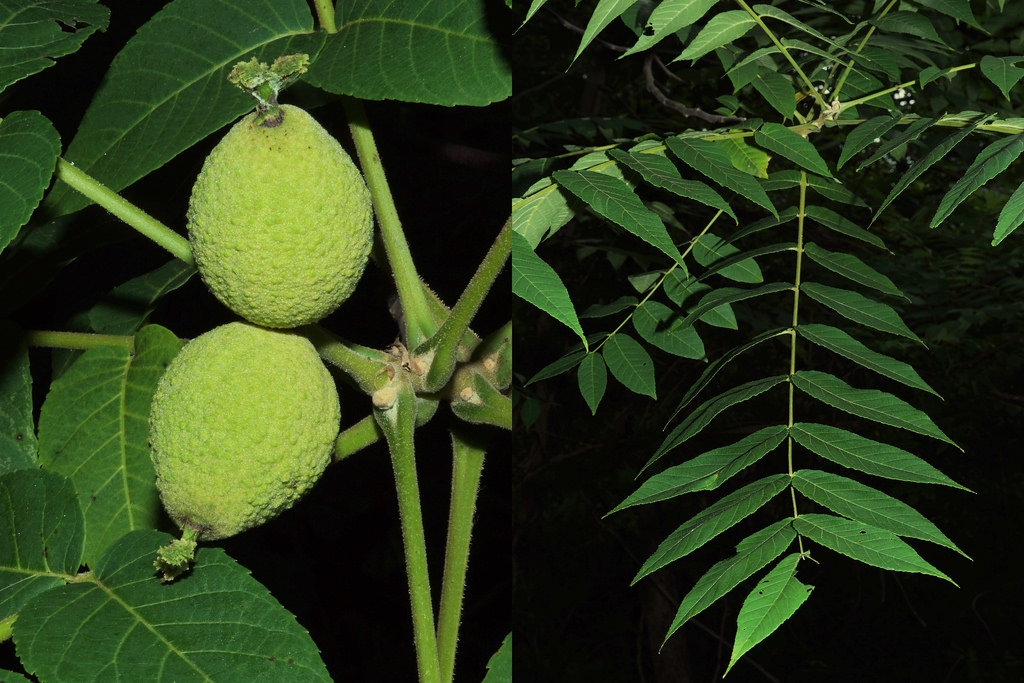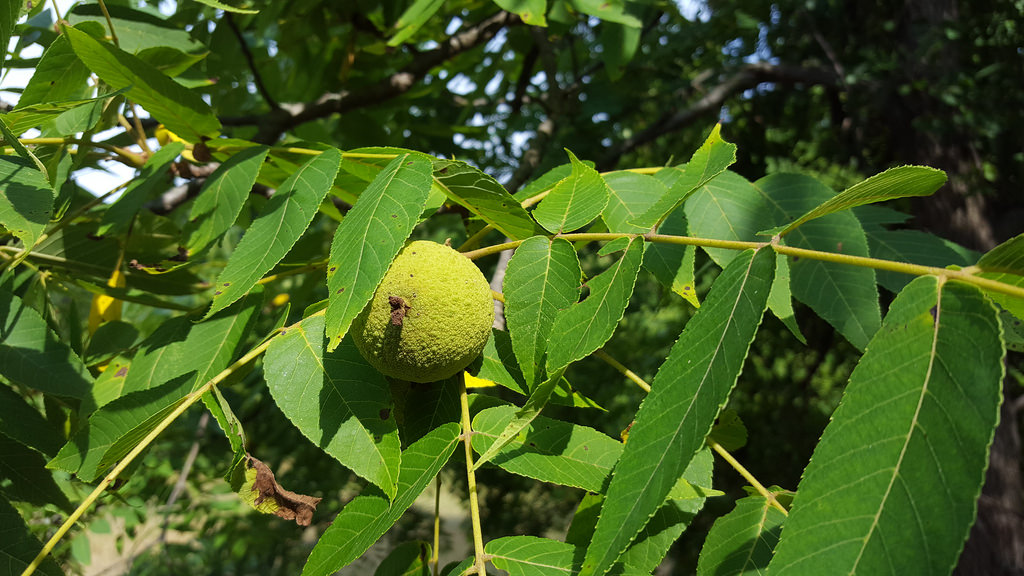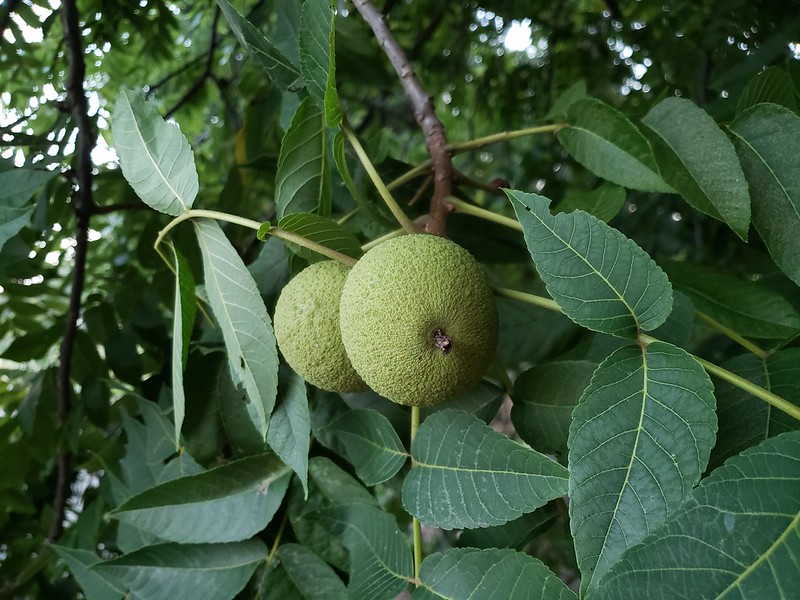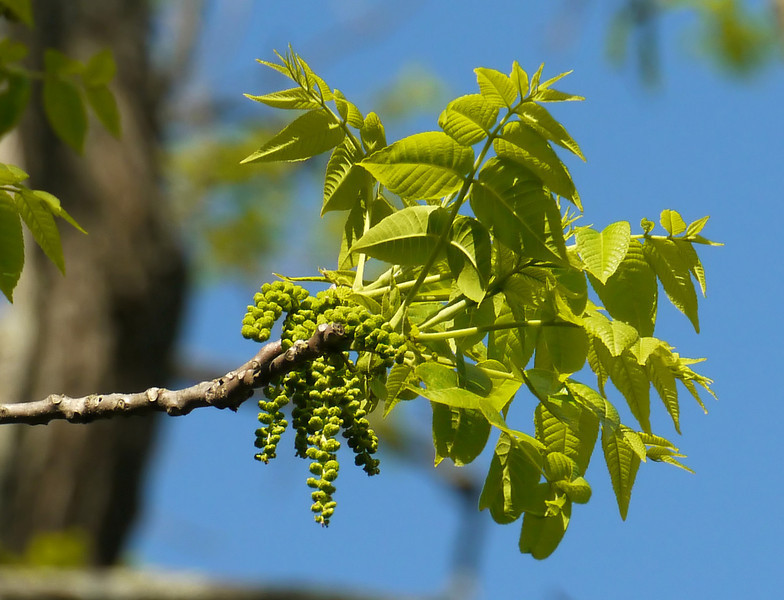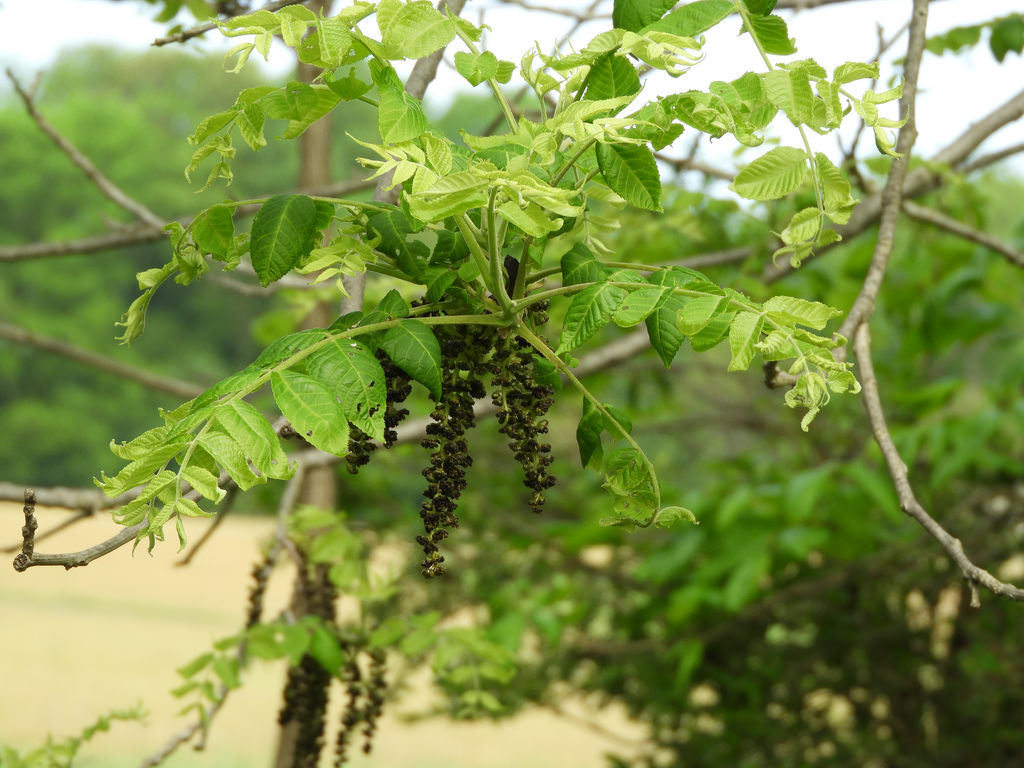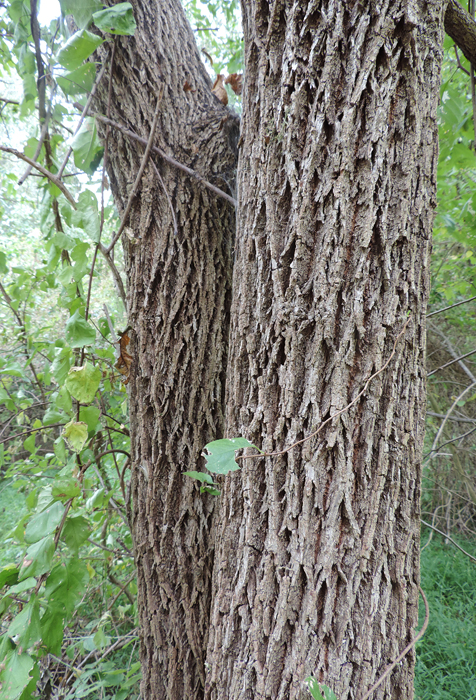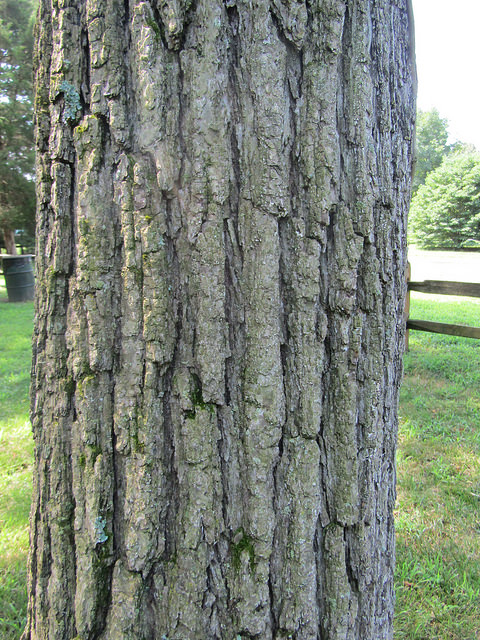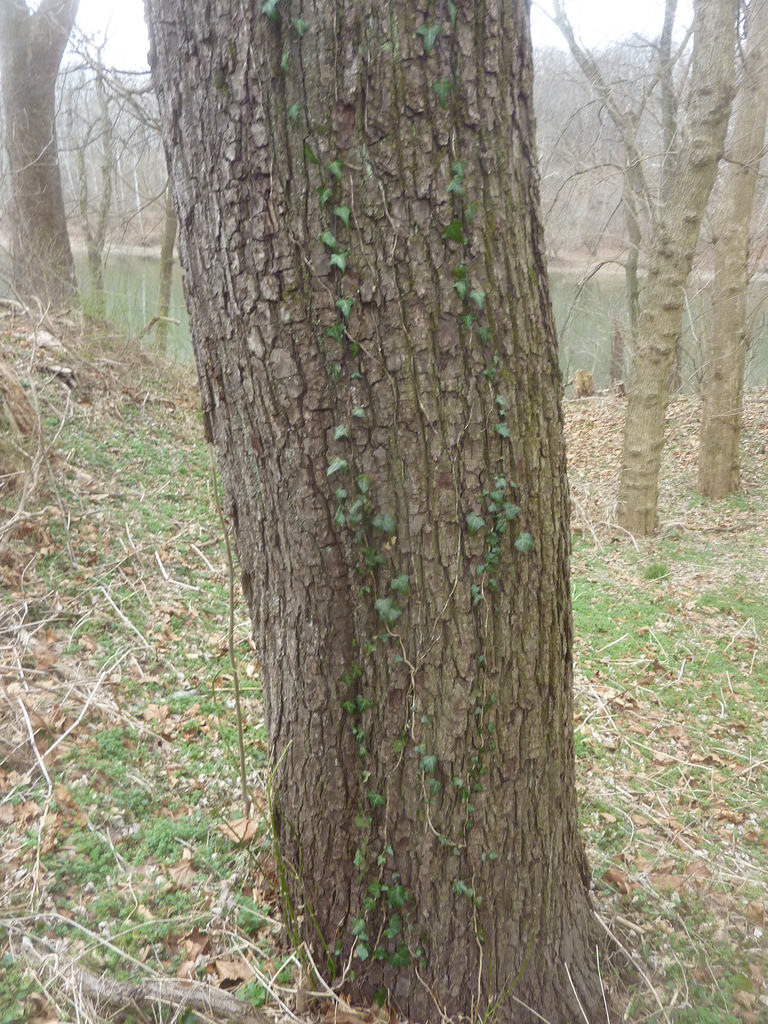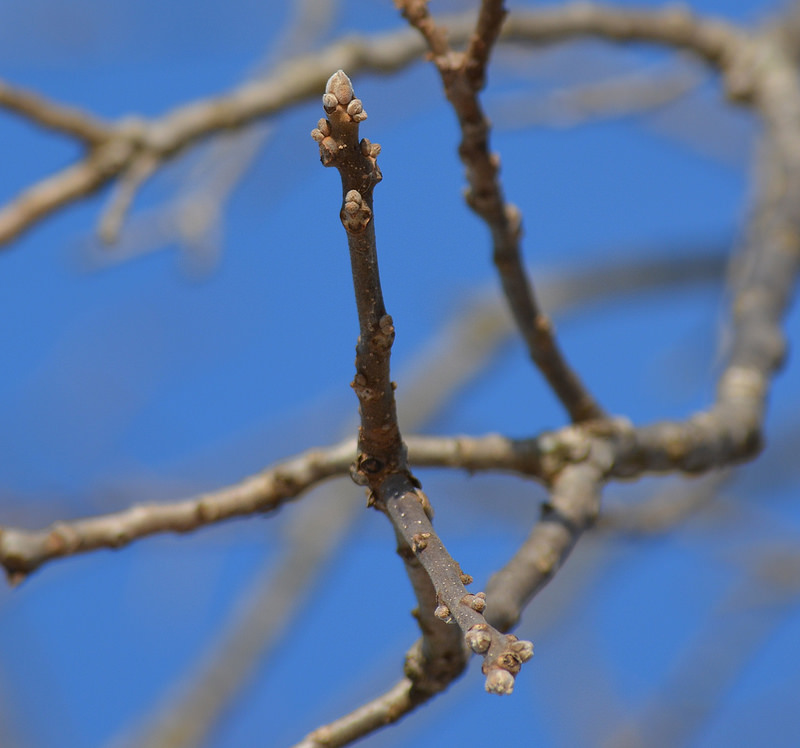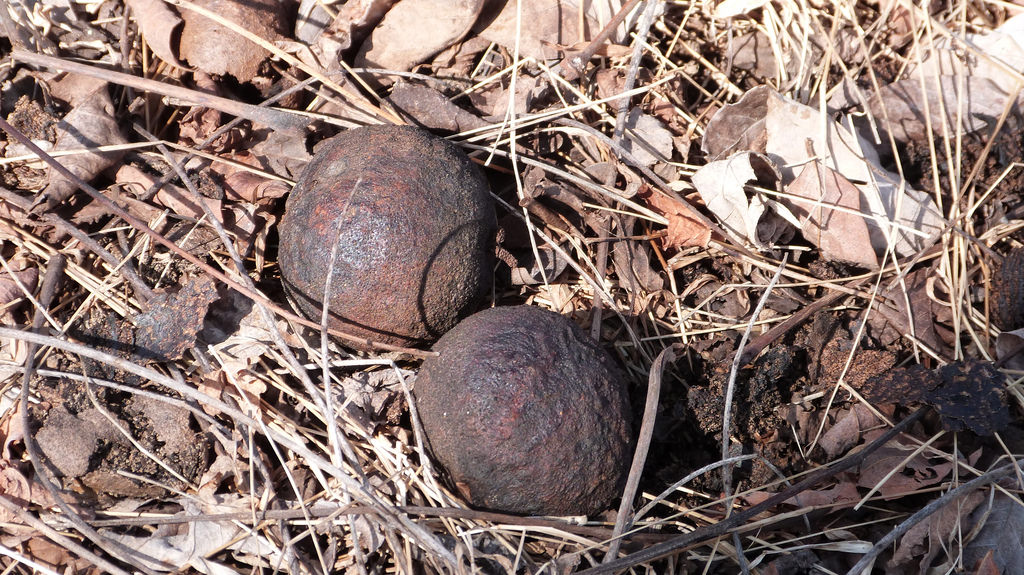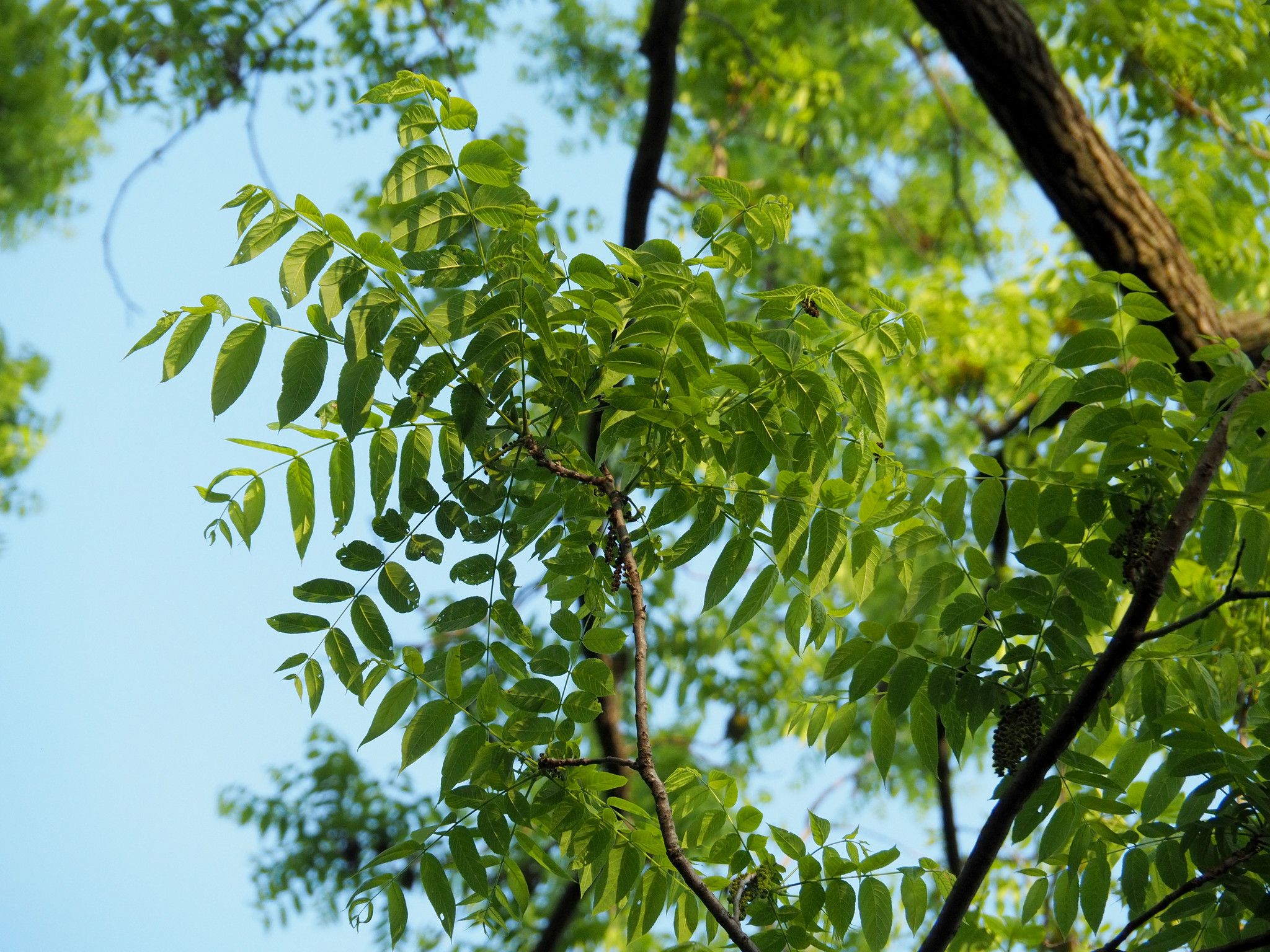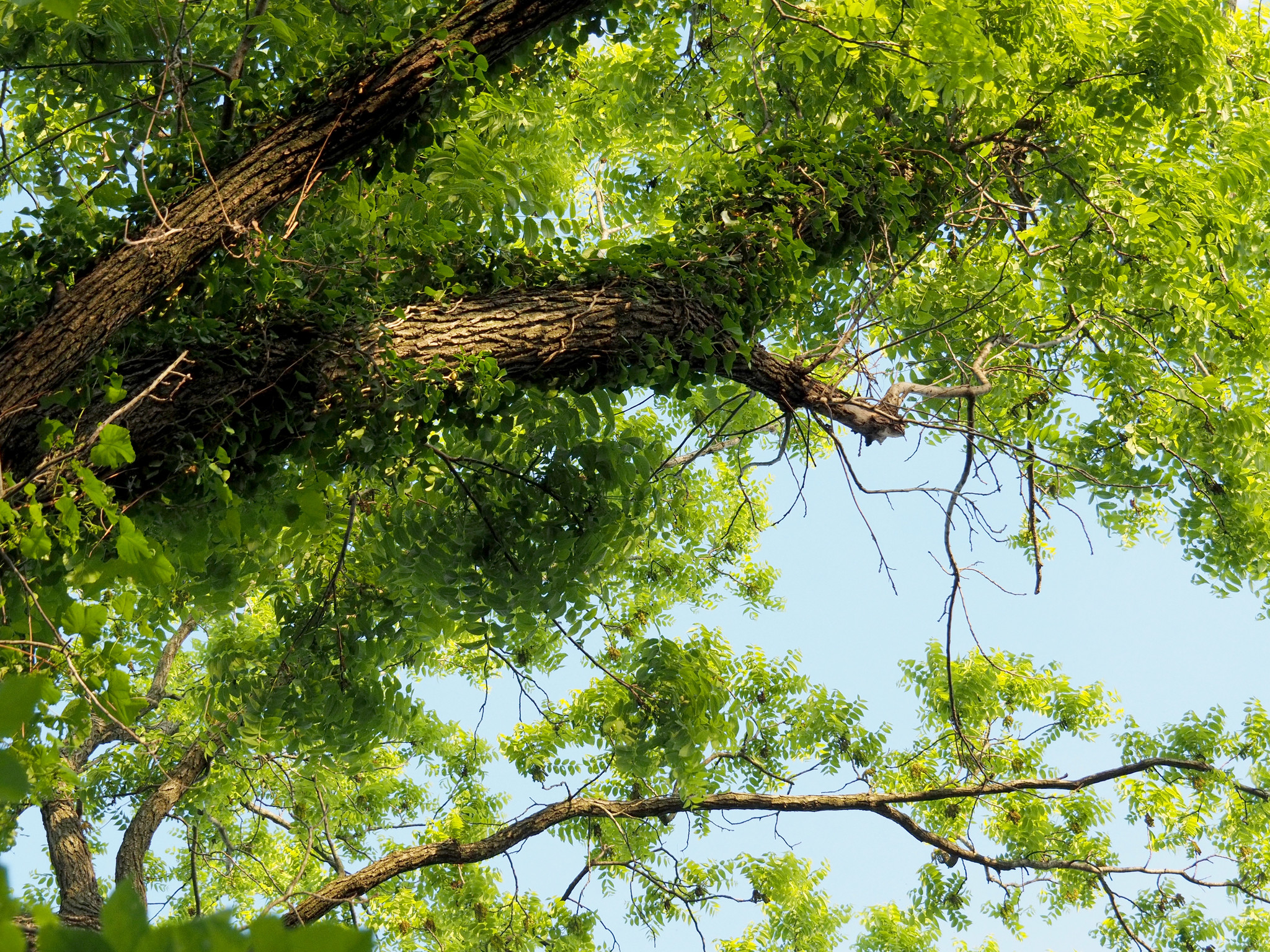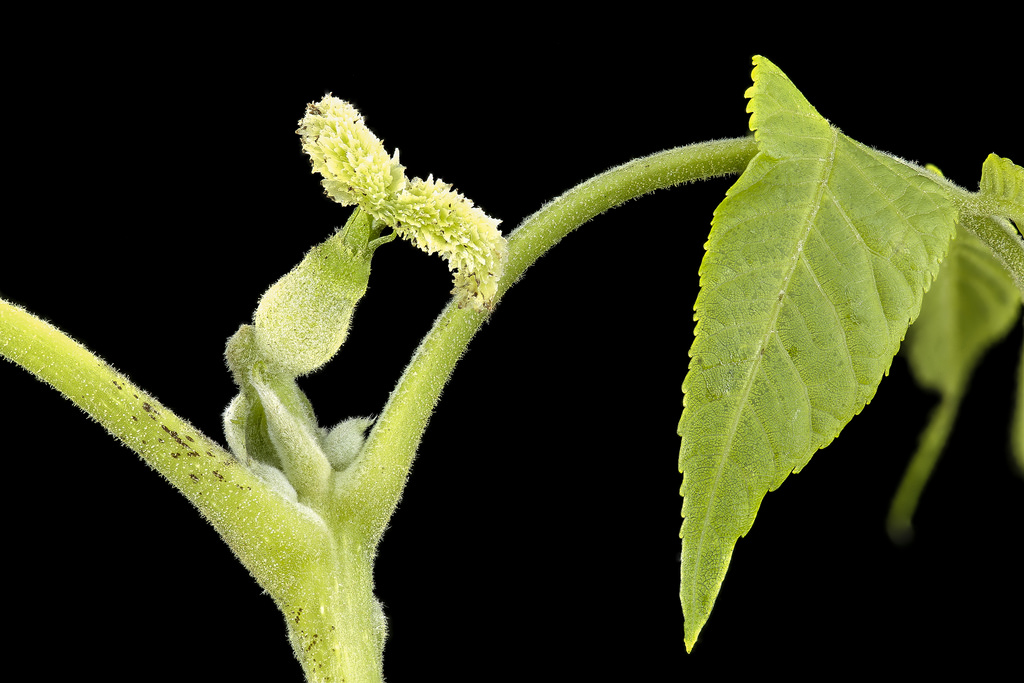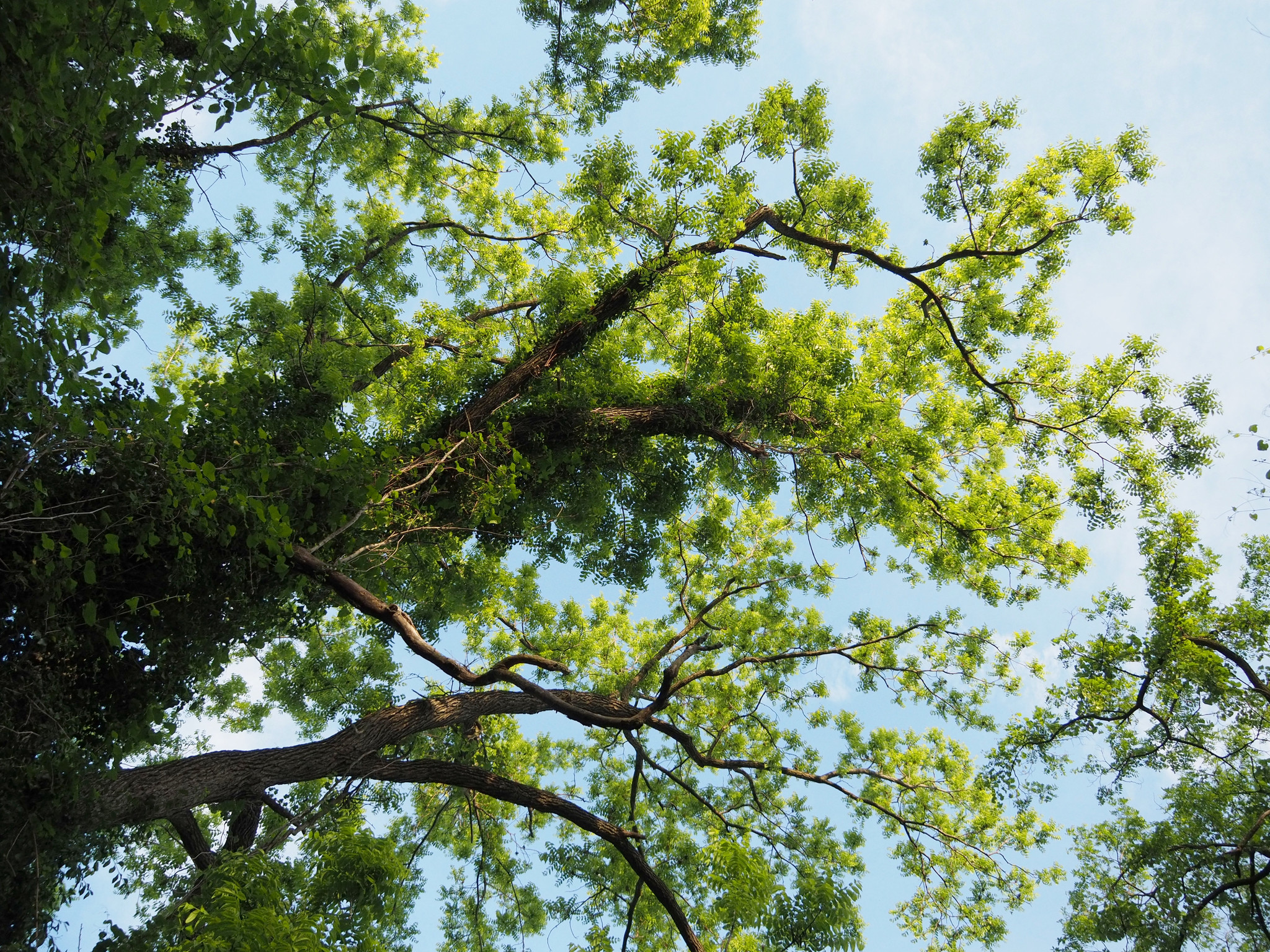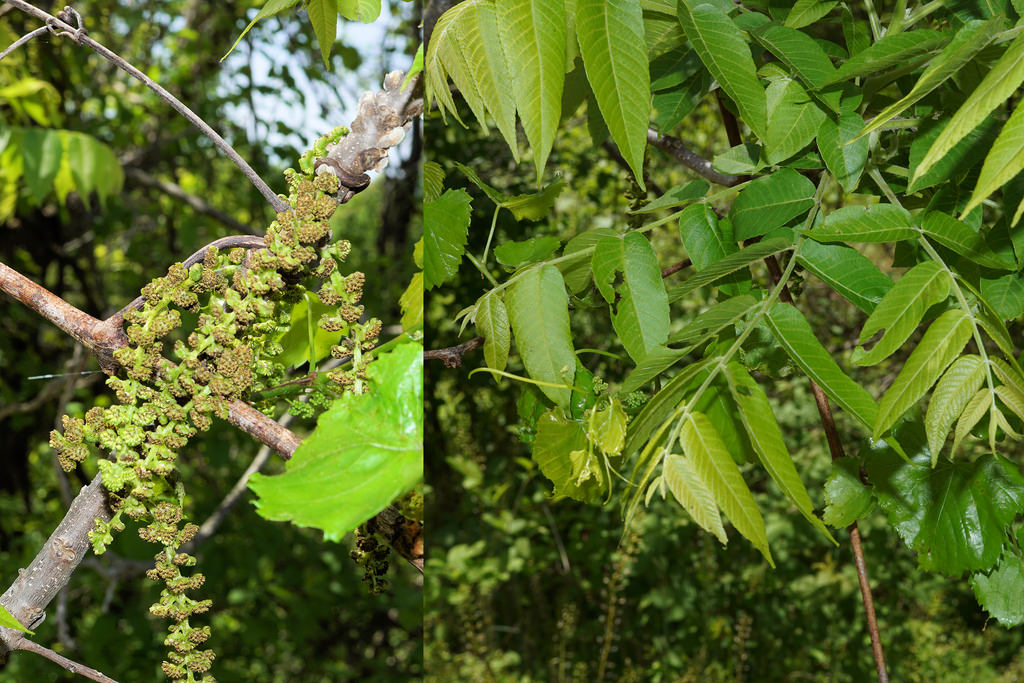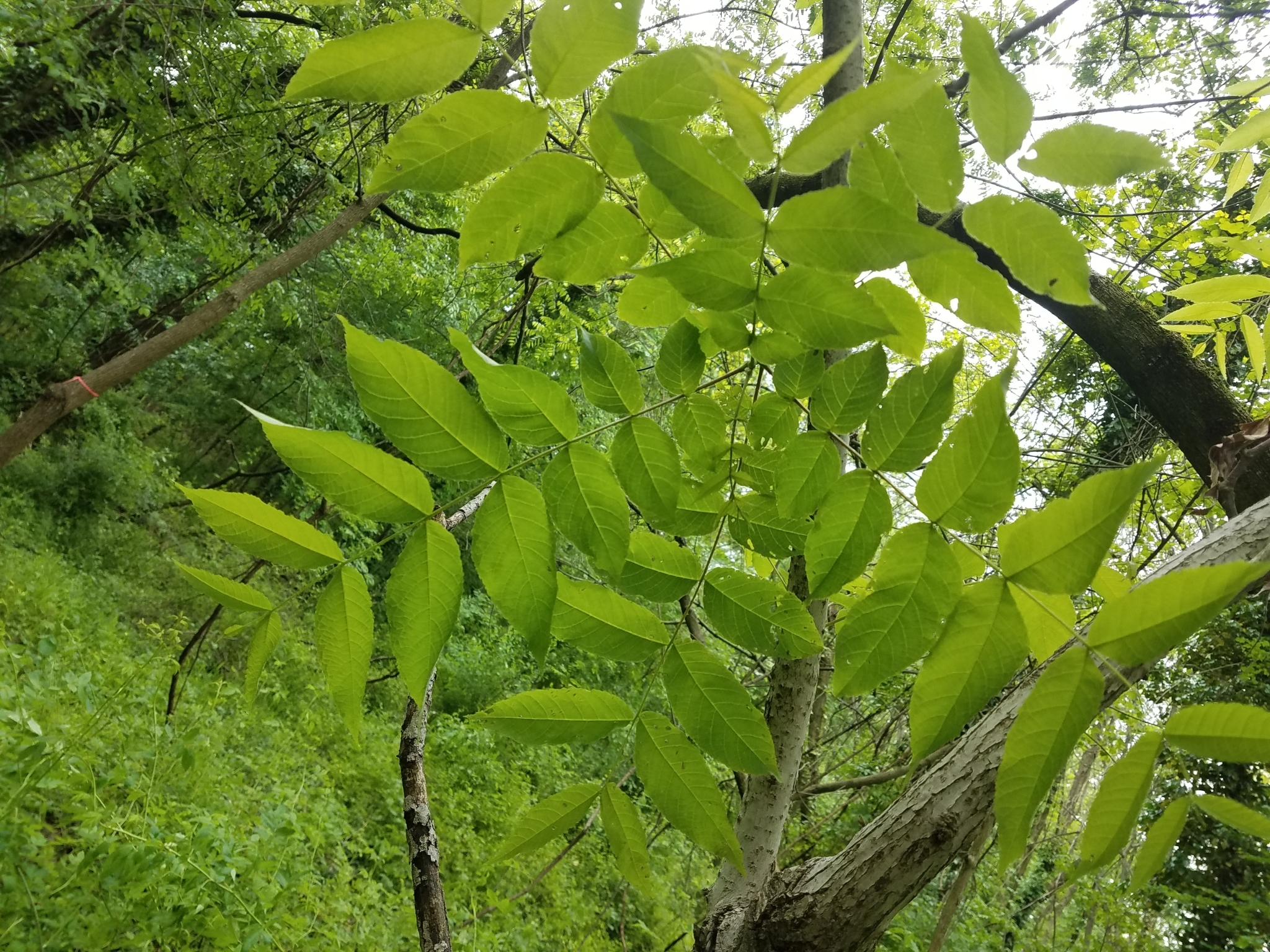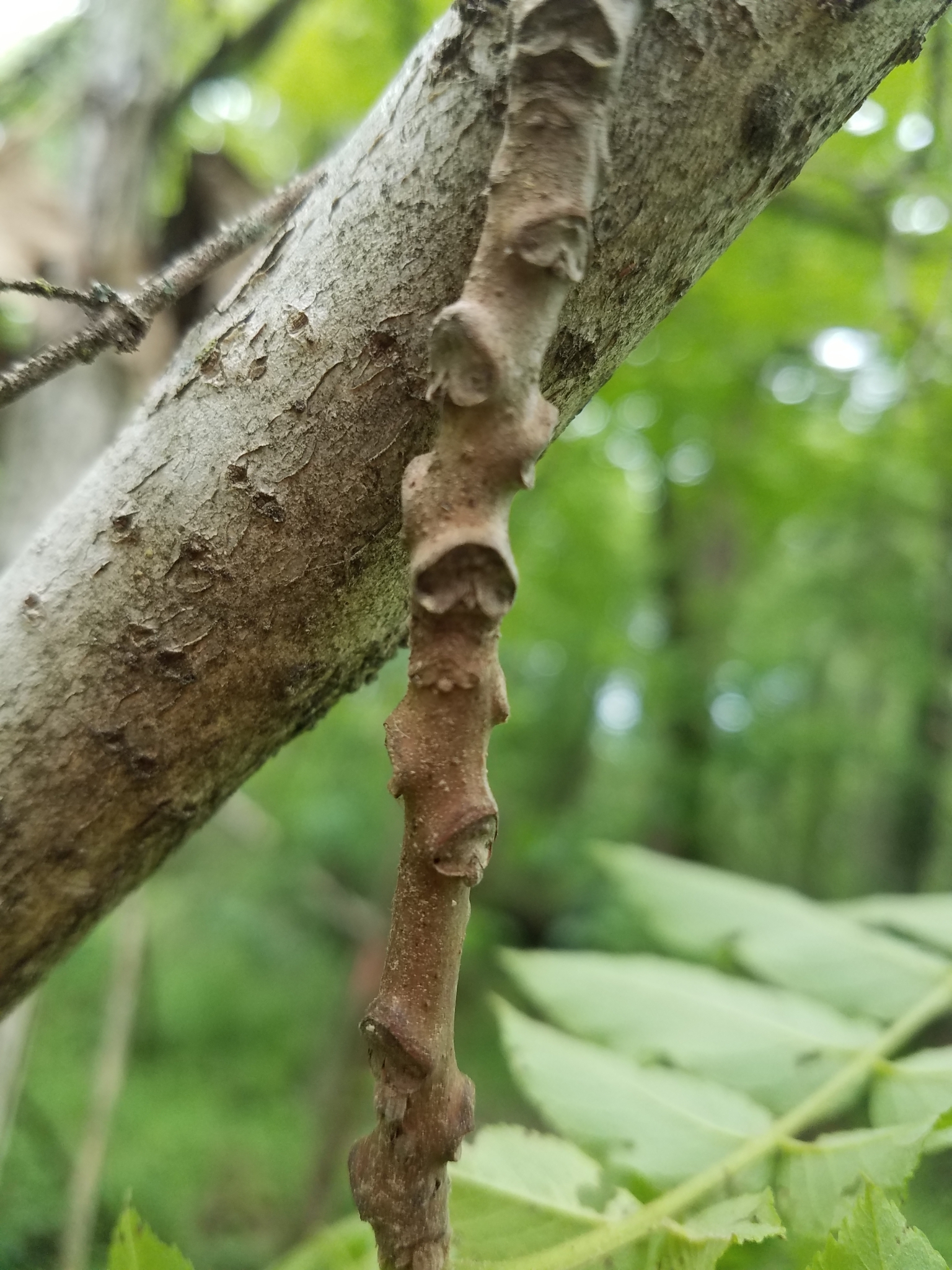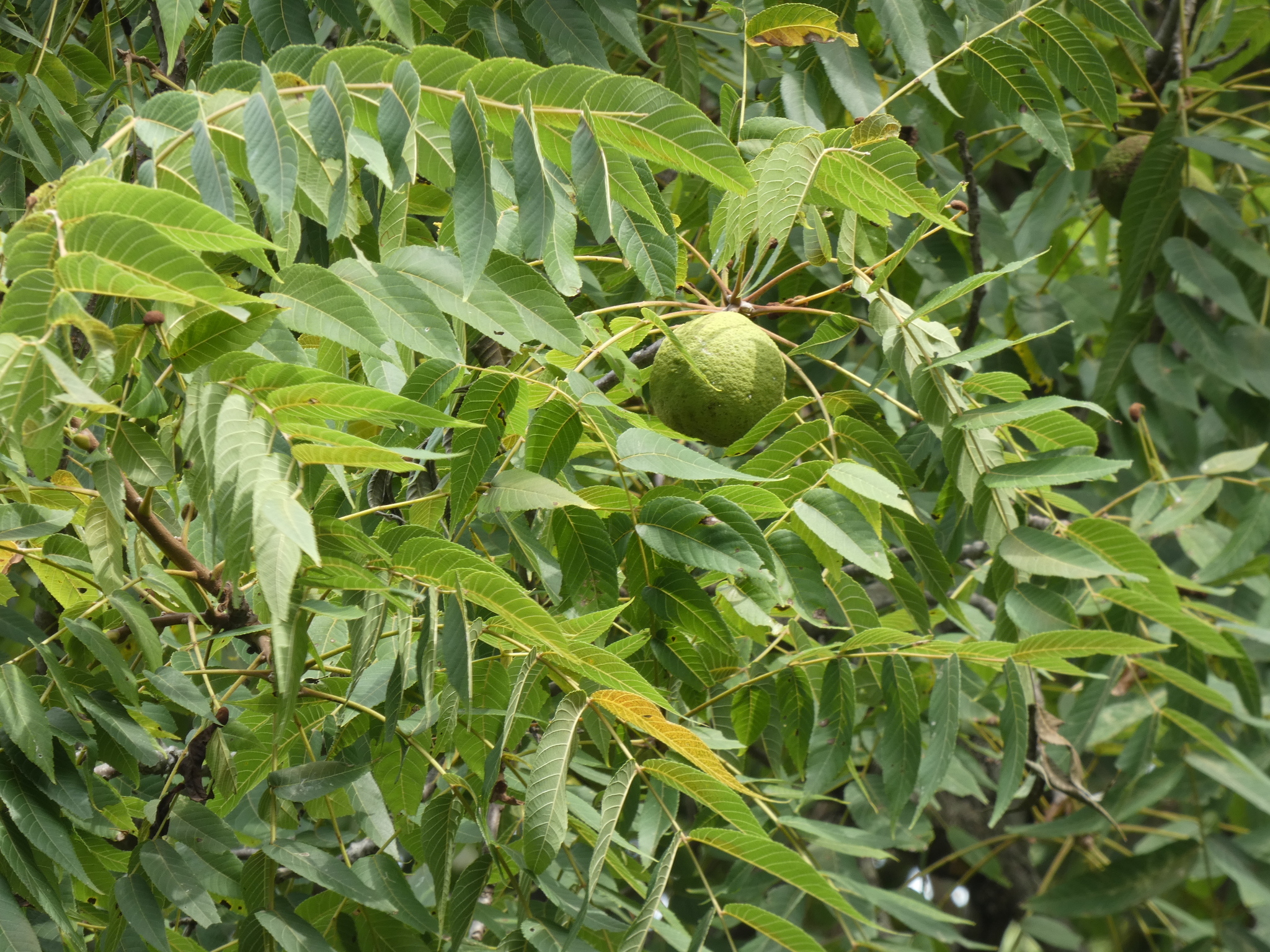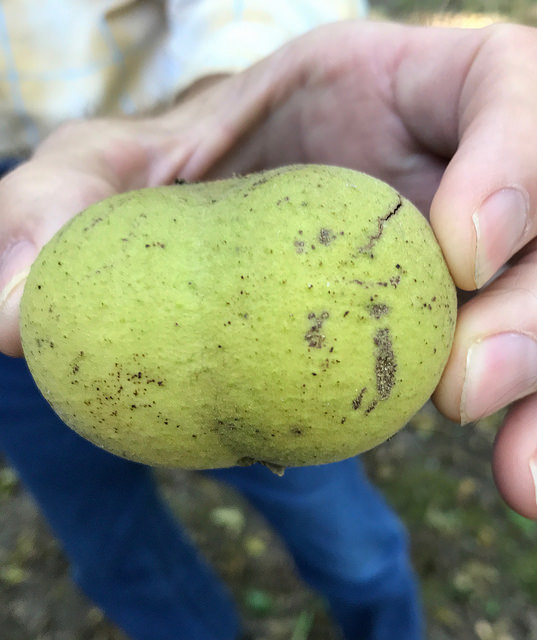

 Synonyms: Eastern Black Walnut, Wallia nigra.
Synonyms: Eastern Black Walnut, Wallia nigra.























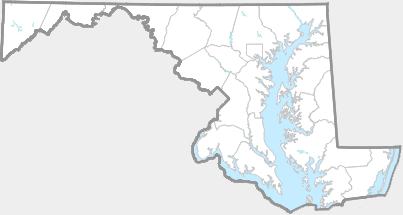
Black Walnut is one of two native species of walnut; the other is the state-rare species, Butternut, also called White Walnut (Juglans cinerea). Black Walnut is distributed from western Massachusetts to central Nebraska, south to eastern Texas and southern Georgia (Harlow, 1957). The wood is of high commercial value.
Black Walnut is a medium to large tree, often 50 to 75 feet tall. When growing in a forest, it has a clear straight trunk. Leaves are pinnately compound, with 9-23 leaflets; terminal leaflet usually lacking, in contrast to Butternut, in which a terminal leaflet is usually present (Weakley, et al., 2012). Black Walnut twigs have light yellowish-gray pith, in contrast to the chocolate-colored pith of Butternut; the pith of both species is chambered. Bark of Black Walnut is brown to nearly black, and on mature trees becomes deeply furrowed, with rough ridges. The nut is spherical, in contrast to Butternut's ellipsoidal nut.
Black Walnut grows in rich soil of mesic upland forests, floodplain forests, open fields, and fencerows (Weakley, et al., 2012). It has been recorded from every county in Maryland, but is most common in the northern and western counties. Not frequent on the lower Eastern Shore (Brown and Brown, 1982).
Black Walnut shells produce an allelepathic substance called juglone, which inhibits the growth of plants beneath it.
Has been recorded as a host plant for Banded Hairstreak.
Host plant for various moth species including Luna Moth, Regal Moth, Imperial Moth, Walnut Sphinx Moth, Fall Webworm Moth, Walnut Caloptilia, Pecan Leafminer Moth, Monkey Slug Moth, Skiff Moth, Sad Underwing Moth, Bride Underwing Moth, Penitent Underwing Moth, Yellow-gray Underwing Moth, Widow Underwing Moth, Banded Tussock Moth, Angus's Datana Moth, Walnut Caterpillar Moth, Red-humped Caterpillar Moth, Black-blotched Prominent Moth, Closebanded Yellowhorn Moth, Walnut Shoot Moth, Pecan Leaf Casebearer Moth, American Plum Borer, Hickory Shuckworm Moth, Pecan Bud Moth, Gray-edged Bomolocha Moth, Sleeping Baileya Moth, and Small Baileya Moth.
Decaying shells host the fungus Walnut Mycena (Database of World's Lepidopteran Host Plants).
The fruit fly pest Walnut Husk Maggot feeds on Black Walnut fruit.
Black Walnut is a host plant for the Butternut Woollyworm.
There are 588 records in the project database.
| GA | AL | WA | FR | CL | MO | HO | BA | BC | HA | CE | PG | AA | CV | CH | SM | KE | QA | CN | TA | DO | WI | SO | WO |


